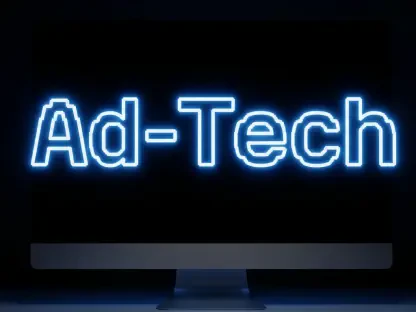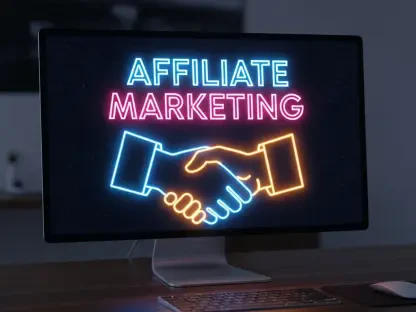The Adtech Revolution: A Surge in Mergers and Acquisitions
The advertising technology sector, commonly known as adtech, stands at a pivotal moment in 2025, with a staggering $13 billion in mergers and acquisitions (M&A) recorded in the third quarter of the previous year, signaling a transformative era. This colossal wave of consolidation underscores an industry racing to adapt to digital disruption, where innovation is no longer optional but essential for survival. Adtech, once a fragmented space of niche players, has evolved into a powerhouse driven by data, automation, and cutting-edge technology, reshaping how brands connect with consumers.
At the heart of this revolution lies the intense push for scale and technological prowess, as evidenced by the unprecedented deal volume that has redefined market dynamics. Major players, from traditional adtech firms to Big Tech giants like Google and Meta, are aggressively positioning themselves to dominate this lucrative space. These companies are not merely competing for market share but are also setting new benchmarks for innovation, often through strategic acquisitions that bolster their capabilities.
A significant catalyst behind this M&A surge is the rapid advancement of artificial intelligence (AI) and programmatic advertising, which automate ad buying and placement with unparalleled precision. These technologies have become the backbone of modern advertising, enabling firms to optimize campaigns in real time and driving the need for larger, more integrated platforms. As competition intensifies, the race to innovate and achieve economies of scale has created a highly dynamic landscape, where only the most adaptable and forward-thinking entities are likely to thrive.
Driving Forces Behind the Merger Mania
Key Trends Fueling Consolidation
The surge in adtech mergers is propelled by transformative trends that are redefining how advertising operates in a digital-first world. Central to this movement is the integration of AI, which enhances ad targeting and optimization by leveraging vast datasets to predict consumer behavior with remarkable accuracy. This technological leap has made AI capabilities a prime target for acquisitions, as companies seek to stay ahead in an increasingly data-driven market.
Beyond AI, the rise of programmatic advertising and connected TV (CTV) has emerged as a critical focus area, reflecting shifts in how audiences consume content. With more viewers migrating to streaming platforms, firms are consolidating to capture this growing segment, while programmatic tools streamline ad delivery across channels. Additionally, evolving consumer habits, such as heightened mobile engagement and digital-first lifestyles, are pushing companies to acquire expertise and technologies that align with these behavioral changes.
Another powerful driver is the looming shadow of Big Tech dominance, with giants like Google and Meta setting high standards for innovation and market control. Smaller and mid-sized adtech firms are finding it imperative to merge or partner with others to build the scale and resources necessary to compete. This strategic imperative is not just about survival but about carving out a sustainable position in a market where technological superiority often dictates success.
Market Data and Growth Projections
Supporting this merger frenzy are compelling statistics that highlight the sector’s explosive growth trajectory. A remarkable 118% year-over-year increase in M&A deals was recorded in the third quarter of last year, culminating in a deal value of $13 billion, a clear indicator of the industry’s robust momentum. This figure reflects not only the volume of transactions but also the high stakes involved as companies vie for strategic advantages.
Looking ahead, market forecasts paint an optimistic picture, with the global adtech market expected to grow from $986.87 billion in 2025 to $2,547.17 billion by 2032, achieving a compound annual growth rate (CAGR) of 14.5%. Analysts also predict a 26% quarter-over-quarter increase in deal activity, suggesting that the consolidation wave will continue to gain steam in the coming periods. Such projections underscore the sector’s appeal to a wide range of investors, eager to capitalize on its potential.
The attractiveness of adtech to private equity and strategic buyers is further fueled by its promise of innovation and scalability. With digital advertising becoming an integral part of global marketing budgets, the sector offers substantial returns for those willing to navigate its complexities. This financial allure, combined with technological advancements, ensures that M&A activity will remain a defining feature of the industry for the foreseeable future.
Challenges in the Adtech M&A Landscape
The merger boom, while indicative of growth, is not without significant obstacles that test the resilience of industry players. Data privacy concerns have taken center stage, as consumers and regulators alike demand greater accountability in how personal information is used for advertising. The phasing out of third-party cookies, a once-critical tool for tracking, has added another layer of complexity, forcing companies to rethink their data strategies amid this consolidation wave.
Transparency issues in sourcing and supply chains also pose a challenge, as advertisers and partners seek clearer insights into ad placements and costs. Regulatory pressures are mounting globally, impacting how deals are structured and executed, with firms needing to ensure compliance while pursuing growth. These hurdles are particularly evident in regions like the GCC, where efficiency-driven mergers have led to operational challenges, including potential job losses that ripple through local economies.
To navigate this intricate terrain, adtech companies are increasingly targeting acquisitions that address privacy and compliance needs head-on. Investing in technologies that prioritize user consent and data security is becoming a strategic priority, as is fostering partnerships that enhance transparency. While these challenges are daunting, they also present opportunities for firms to differentiate themselves by aligning with evolving ethical and legal standards.
Regulatory Pressures and Compliance in Adtech Mergers
The regulatory environment surrounding adtech M&A is growing more stringent, with data protection laws shaping the way companies approach consolidation. Policies targeting the use of third-party cookies and mandating explicit user consent are fundamentally altering industry practices, requiring firms to adapt quickly to maintain trust and operational continuity. This shift is not merely a compliance issue but a strategic one, influencing the very nature of acquisitions.
Compliance and security measures have become non-negotiable in sustaining consumer confidence during periods of rapid merger activity. As companies combine datasets and technologies, ensuring robust safeguards against breaches and misuse is paramount. Failure to prioritize these aspects can result in reputational damage and financial penalties, making regulatory alignment a critical component of deal planning.
The impact of these regulations extends to deal structures themselves, with acquirers often focusing on targets that bring privacy-first solutions or expertise in navigating legal frameworks. This strategic focus reflects a broader recognition that long-term success in adtech hinges on balancing innovation with accountability. As standards continue to evolve, adaptability in M&A strategies will be essential to mitigate risks and seize emerging opportunities.
The Future of Adtech: AI and Beyond
Looking toward the horizon, the adtech industry is poised for profound transformation, with AI serving as a cornerstone of future advancements. Its potential to revolutionize advertising through predictive analytics and personalized campaigns is unmatched, promising to elevate efficiency and effectiveness to new heights. As AI continues to mature, its integration into every facet of advertising will likely deepen, setting the stage for even more disruptive innovations.
Emerging trends such as the dominance of CTV, the proliferation of mobile advertising, and the convergence of marketing technology (martech) with adtech are also shaping the sector’s trajectory. These developments are not isolated but interconnected, driving demand for comprehensive platforms that can manage diverse channels seamlessly. Additionally, Big Tech innovations, including AI-driven ad agents from companies like Google and Amazon, are potential disruptors that could redefine competitive dynamics.
Global economic conditions, shifting consumer preferences, and relentless technological progress will further influence the industry’s growth path. To remain competitive, adtech firms must prioritize adaptability, forging strategic partnerships that enhance their agility and market reach. The ability to anticipate and respond to these multifaceted forces will determine which players emerge as leaders in this fast-evolving arena.
Conclusion: Balancing Opportunity and Risk in Adtech’s New Era
Reflecting on the monumental $13 billion merger surge in the adtech sector during the third quarter of the prior year, it became evident that AI played a central role in driving both innovation and deal valuations. This period of intense consolidation positioned numerous firms to challenge Big Tech’s dominance while grappling with significant market challenges, marking a turning point for the industry’s competitive landscape.
As stakeholders looked back, the strategic importance of M&A in navigating privacy concerns and regulatory hurdles stood out as a defining factor. Moving forward, actionable steps emerged as critical, with a strong emphasis on investing in AI capabilities to maintain a technological edge. Prioritizing compliance and forging alliances to address data security also became essential strategies to mitigate risks.
Ultimately, the path ahead called for a renewed focus on innovation balanced with ethical considerations. Companies were urged to explore untapped markets and technologies, such as advanced CTV solutions, while maintaining consumer trust through transparent practices. This blend of optimism and caution shaped a roadmap for success, highlighting that sustained growth in adtech demanded both vision and vigilance.









